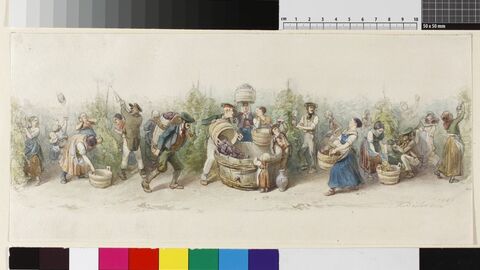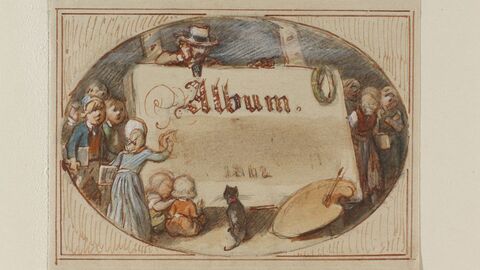At an auction on 20 May 1941 in Wilhelm Ettle‘s Frankfurt auction house, the Hesse State Museum Darmstadt acquired two drawings by the Frankfurt artist Jakob Fürchtegott Dielmann (1809-1885). According to the auction catalogue, the objects were submitted by a “Frl. M.”—the identity of this “Miss M.” could not to date be determined.
Blog
Who was “Frl. M.” [Miss M.]?

According to the auction catalogue, the objects were submitted by a “Frl. M.” [Miss M.]. In the National Socialist era, using abbreviations to label auction lots was part of the mechanism employed by the Reich Chamber of Culture to monitor the art market. The auction houses had to apply for authorisation for each auction, to include submitting a list of the objects up for auction with names and addresses of the vendors. The application for this particular auction has unfortunately been lost. Since the auction house itself no longer possesses any documentation, the identity of “Miss M” remains a mystery to this day.

The drawings themselves nevertheless yield information on their provenance: two stamps on their reverse sides (Lugt 1367) verify that the drawings were previously in the collection of the Frankfurt citizen Heinrich Stiebel. Stiebel’s extensive collections of art, autographs, and Frankfurt cultural artefacts were auctioned off between December 1928 and May 1930 by Joseph Baer & Co. and F. A. C. Prestel. However, the two Dielmann drawings are not listed in any of the six auction catalogues.
The two drawings are typical examples of mid-19th century art, when such humoristic coloured drawings were very popular. The two works—in particular the title page for an illustrated children’s book—were probably meant to be reproduced as colour prints.
This type of art was very popular in the National Socialist era, when it was frequently bought and sold. The auctioneer Wilhelm Ettle also benefitted from this trade, on the one hand by auctioning off such works and on the other by misappropriating the cultural assets of Frankfurt’s Jews confiscated by the authorities.
In 1929 Ettle joined the SA, and in 1932 the National Socialist Party itself. From 1938 he was special envoy of the Reich Chamber of Culture, responsible for evaluating the property of emigrants and deportees. In 1941 misappropriation proceedings were initiated against Ettle, leading in 1944 to his occupational disbarment.
Ettle is one of the few art dealers who were arraigned and convicted for their deeds after the end of the National Socialist era. In 1946 he was sentenced to seven years in prison and his wife Anni to five. His unscrupulous practices have caused the auctions conducted by him to fall under grave suspicion of having dealt in cultural assets looted by the National Socialists. In the absence of other information sources, the provenance of the two drawings still remains incomplete.
Udo Felbinger